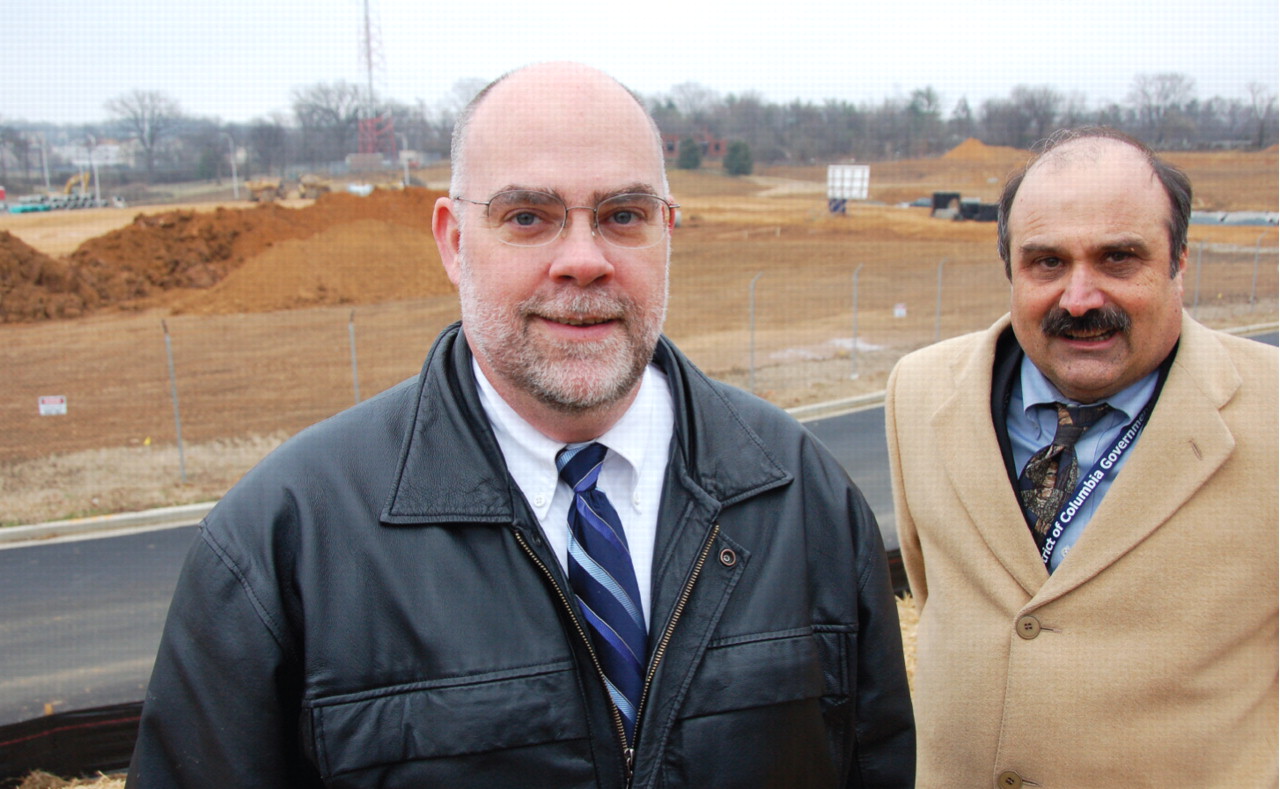St. Elizabeths Hospital in Washington, D.C., has broken ground for a new building and set out simultaneously to reconstruct its organizational structure and image and how it cares for patients.
St. Elizabeths opened in 1855 as the Government Hospital for the Insane to provide the “most humane care and enlightened curative treatment of the insane of the Army, Navy, and District of Columbia,” in the words of 19th mental health reformer Dorothea Dix. The hospital also served as a center for psychiatric research and training for much of the 20th century. Its 32 psychiatry residents now train in one of the few programs not affiliated with a medical school.
No major new buildings have been built since 1962 because the hospital was in a political tug of war between the federal government and the city from then until 1984. That's when the city took control of the hospital, according to Roger Peele, M.D. Peele, an APA Trustee, trained at St. Elizabeths in the early 1960s and served as acting superintendent from 1975 to 1977, when money for a new structure was shifted to renovate an older building.
Construction on the new hospital began on December 19, 2006, and is scheduled for completion in 2009. Currently the forensic and civil units are in different buildings but will be combined in the new building. The two units, which will house 292 patients, will be connected by a corridor and share some areas. Some forensics patients—although not maximum-security inmates—will come to the “treatment mall” for therapy, new hospital CEO Patrick Canavan, Psy.D., told Psychiatric News.
In both units, all rooms will be single occupancy to increase safety and the dignity of individual patients, said Canavan. Units will have a semicircular radial plan so that hallways can be viewed simultaneously from a central nursing station.
“The new building is a huge goal in itself and a metaphor for future progress,” said Canavan.
Canavan, who began work on January 2, was appointed to his post by new D.C. Mayor Adrian Fenty and is in the process of making changes to improve care.
Canavan trained as a psychologist and once worked as a ward administrator in St. Elizabeths' John Howard Building, the forensic unit. However, he has spent much of the last decade in the Washington, D.C., mayor's office, most recently as director of the Department of Consumer and Regulatory Affairs. City government experience gave him an insider's view and an understanding of how big organizations work, he said.
“We need to concentrate on how we function as an interdisciplinary team,” said Canavan. “We have to put together an integrated system of care so that the staff knows each patient will get clinically appropriate care.”
That in turn will mean stabilizing the community side of the D.C. mental health system by creating acute-care beds in the city's general hospitals and improving payment systems for providers, said Canavan's boss, Steven T. Baron, L.C.S.W.-C., director of the city's Department of Mental Health. Baron wants to strengthen community mental health resources, as well, so patients assigned to St. Elizabeths' civil unit can eventually live outside the hospital.
“We will also have much more active discharge activities and have targeted 65 patients for September discharge,” said Baron in an interview.
Besides internal organizational issues, St. Elizabeths faces outside pressures for change. The hospital has not had JCAHO accreditation for about two decades. That may represent more of a perceptual than a practical problem, but it's one Baron and Canavan would like to overcome.
They're also dealing with a 66-page report issued by the U.S. Department of Justice in May 2006, saying that “numerous conditions and practices at St. Elizabeths violate the constitutional and federal statutory rights of its residents.”
St. Elizabeths, said the report, “fails to provide its patients adequate (1) protection from harm, (2) psychiatric and psychological care and treatment, (3) medical and nursing care and treatment, and (4) discharge planning and placement in the most integrated setting.”
The report was “embarrassing,” said Baron, who started his job just a week after its release. The Department of Justice is working with hospital and District officials to find some resolution, according to a department spokesperson.
However, the report has also spurred Baron, Canavan, and their staffs to accelerate their reorganization.
“We're trying to gather all the pieces of the puzzle together to make one integrated plan and return to JCAHO accreditation,” said Canavan.
More problematic is a lawsuit filed by University Legal Services (ULS), a non-profit entity that provides federally mandated protection and advocacy for the rights of people with disabilities in D.C. (Similar organizations exist in all states.) The suit grew out of a 2004 ULS report complaining that“ patients and staff at St. Elizabeths Hospital... face serious risks to their health and safety everyday.”
Problems the report cited included “overcrowded wards, inadequate clinical staff, insufficient medical resources, overworked and demoralized staff, deficient quality assurance/improvement efforts, inefficient mechanisms for discharging consumers to community-based alternatives, [and] substandard physical conditions.”
“We see these issues as violations of the Americans With Disabilities Act [ADA] and also failures of a constitutional duty to provide a safe place and treatment for patients,” said Mary Nell Clark, J.D., the lead ULS attorney on the case, in an interview. The ADA claim includes failing to make treatment accommodations for individuals with co-occurring disabilities, especially cognitive disabilities, and accessibility problems for people with mobility issues.
“We hope that the new administrators will change things, but we haven't seen it,” she said. “We support Steve Baron's efforts to expand community care. It's not our goal to see inordinate resources spent on an institution where people get stuck. From our point of view, the primary problem is a lack of respect toward patients. We think that Patrick Canavan and Steve Baron do have respect for patients, and we hope that will work its way down to the wards.”
At present, though, the suit is now in the discovery process, as both sides give litigation a chance. As it works its way through the U.S. District Court, some observers feel encouraged by the new regime.
“The problem in the past with St. Elizabeths has been budget problems and poor management,” said Richard Ratner, M.D., president of the Washington Psychiatric Society and a part-time consultant at the John Howard Pavilion. “Today, we believe that the mayor is concerned and that Patrick Canavan is an excellent choice to run the hospital.” ▪


